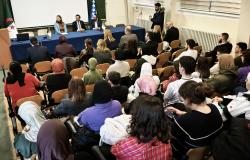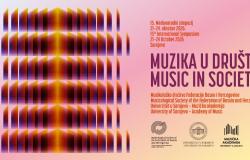Outstanding success of the young scientific team from the Departments of Biology and Chemistry, UNSA Faculty of Natural Sciences and Mathematics
Scientific paper Assessing hexavalent chromium tissue-specific accumulation patterns and induced physiological responses to probe chromium toxicity in Coturnix japonica quail by Departments of Biology and Chemistry of the UNSA Faculty of Natural Sciences and Mathematics authors: Damir Suljević, Jasmina Sulejmanović, Muhamed Fočak, Erne Halilović Pupalović, Azre Hasić and Andija Alijagić, was accepted for publication in the scientific journal of very high influence Chemosphere (IMPACT FACTOR 5.778, Journal Impact Quartile Q1) in the section “Toxicology and Risk Assessment.”
This paper’s value is in the use of an alternative, higher toxicological model, in the analysis of hexavalent chromium accumulation, as an extremely important water contaminant, in vital organs, and the correlation of accumulative affinities with alterations of physiological homeostatic mechanisms.
After two rounds of extremely demanding reviews and acceptance of the paper, the authors are pleased to inform the wider scientific community and layman public in Bosnia and Herzegovina about its success which, according to them, transcends even regional borders, taking into account the top quality of the scientific journal.
Congratulations on the success were sent by University of Sarajevo Rector, Prof. Dr. Rifat Škrijelj. He expressed the support of the University of Sarajevo to young researchers and scientists who achieve outstanding results and stressed that the academic community is proud of their success. He also pointed out that in this way the University of Sarajevo continues its practice of promoting and affirming successful researchers who have completed their education at the University of Sarajevo, as well as those who have successfully continued their education at foreign research and university institutions.
Abstract available at:
https://www.sciencedirect.com/science/article/pii/S0045653520332021.








